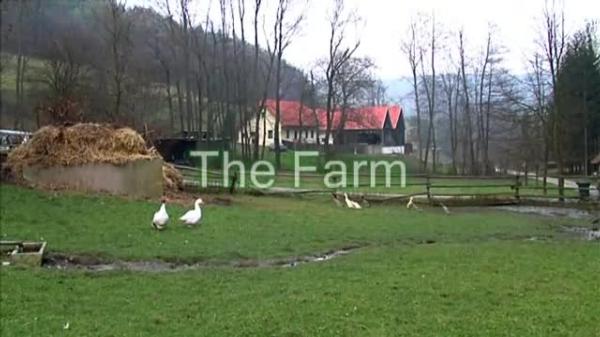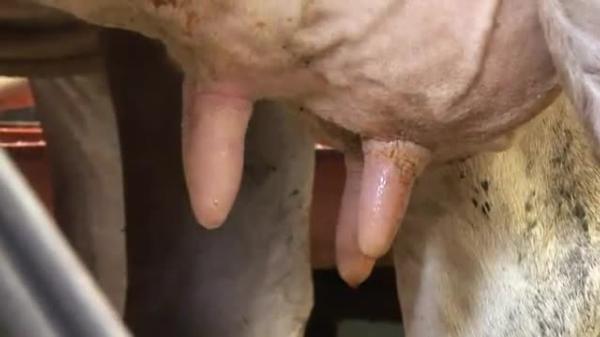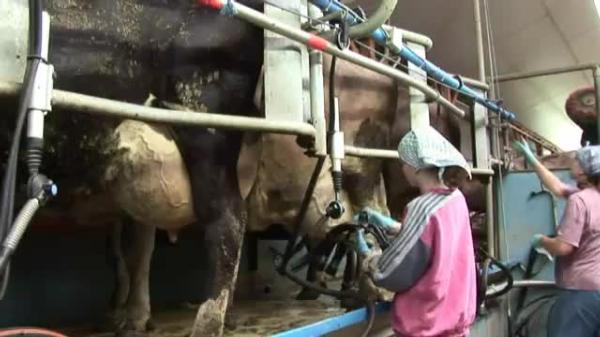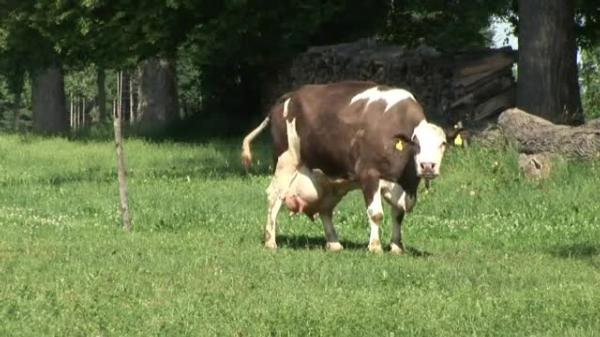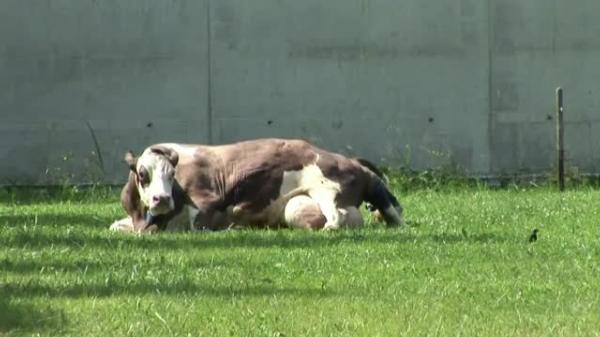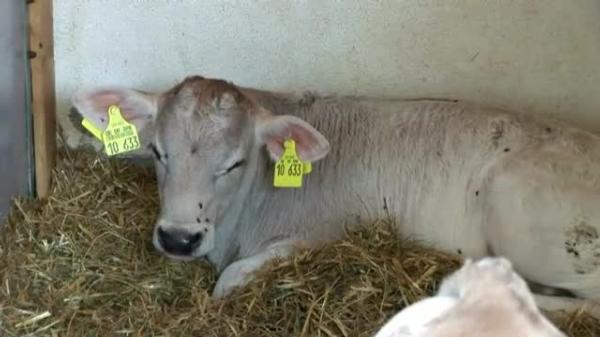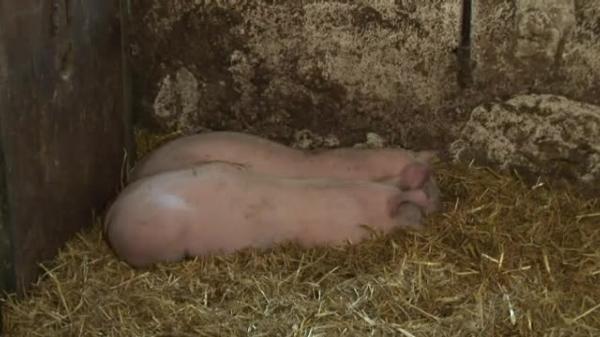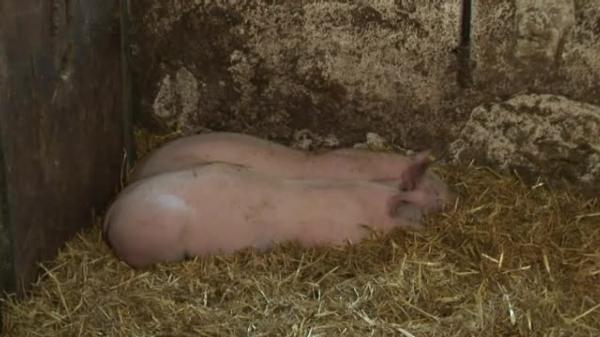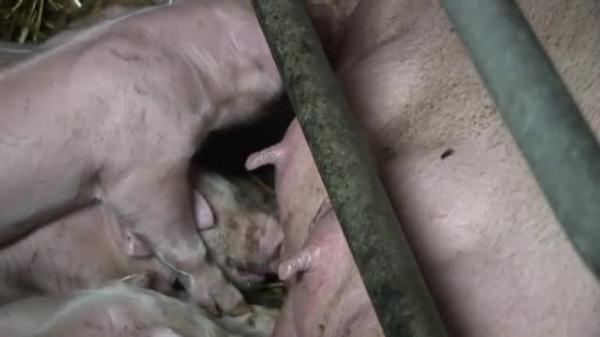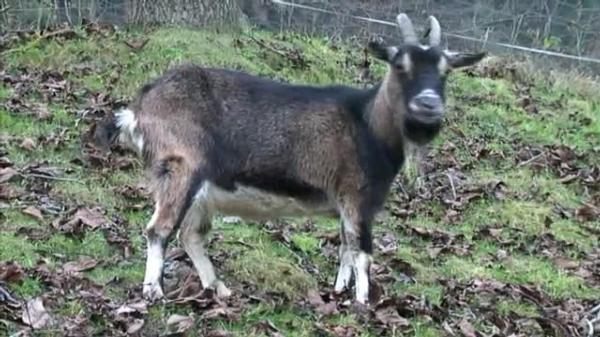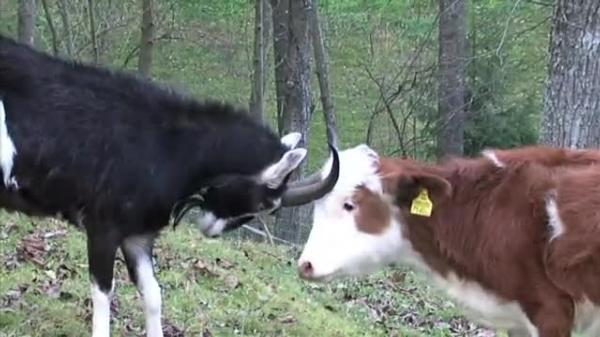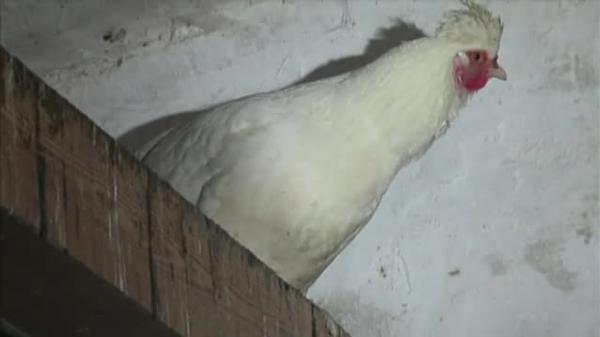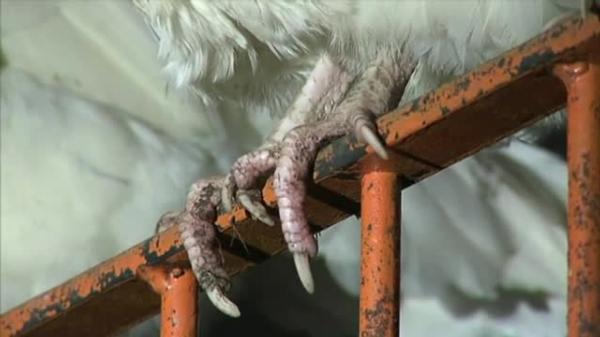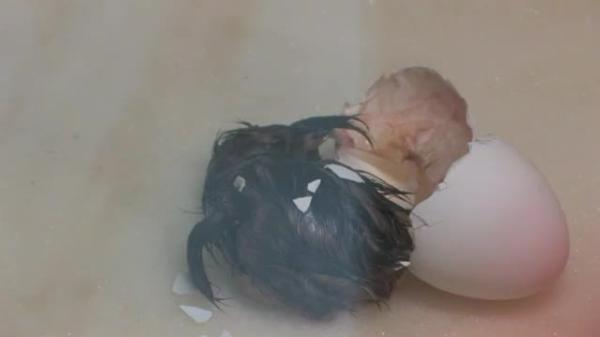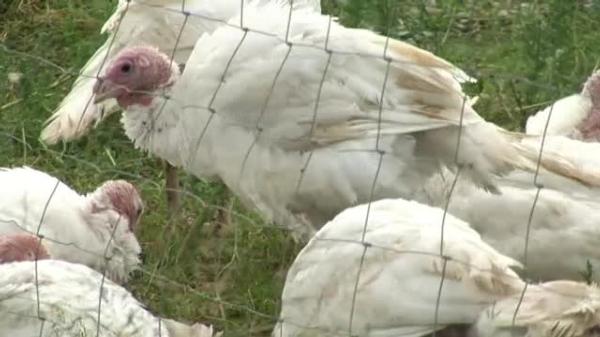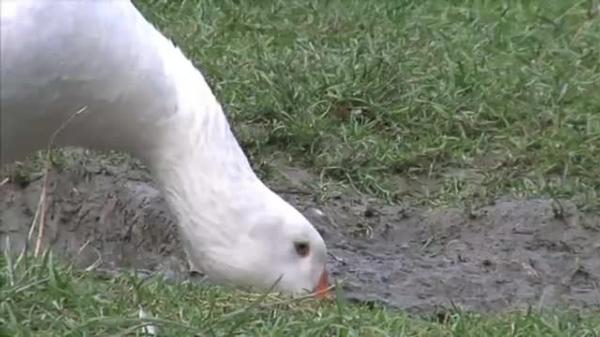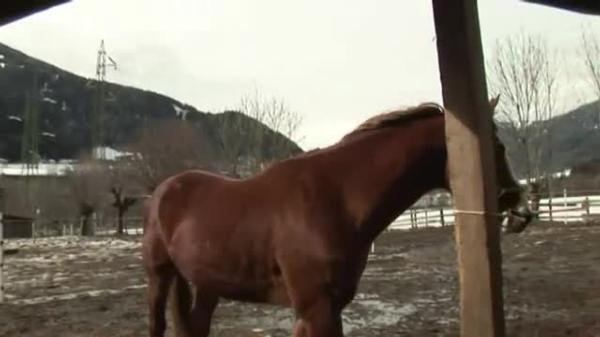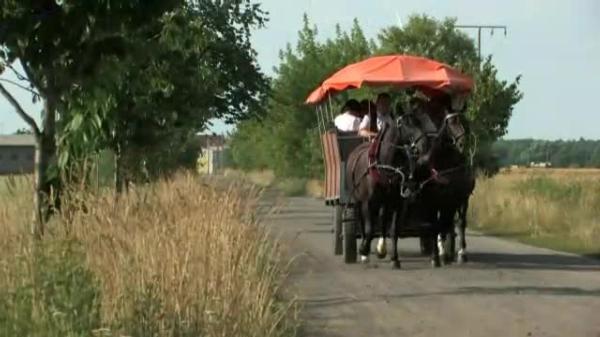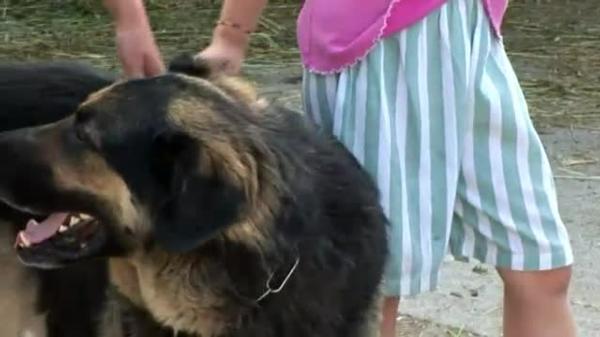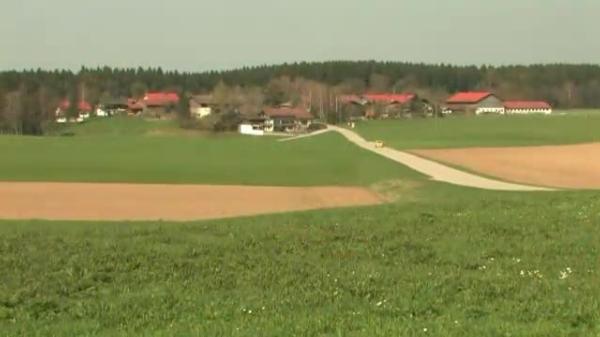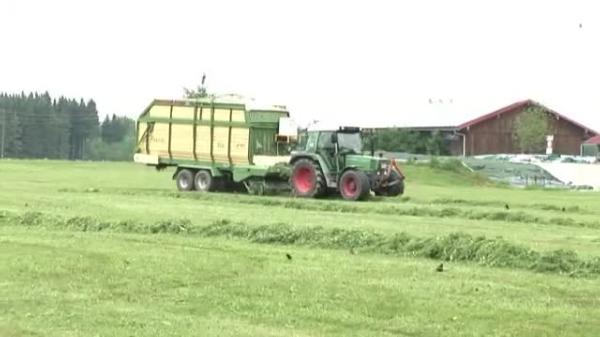Bauernhof
Wo kommt das Essen her?

THE FARM - Where does our food come from?

This food is on our table every day. But where do cheese, milk, eggs, sausages and other food really come from? Let's have a closer look at it together. 1. Cows / Cattle 1.1 The Milk / Milking Every day fresh milk is supplied by the cows. For this they have to go to the milking plant. In large milking plants there is room for several cows at the same time. In the so-called milking parlour the cows are milked twice every day, in the morning and in the evening. Milking all cows by hand would be very difficult. Nowadays cows are milked by milking machines. First the milk is squirted out of the four teats into the pail in time to the pulsator. Through pipes and tubes the milk at last gets into the collecting tank with a fine sieve. A cow produces about 20 litres of milk daily. From the farm the milk is transported directly to the nearest dairy and there it is processed into drinking milk, yoghurt, cheese, butter and other dairy products. 1.2 Out at Pasture To produce a lot of good milk daily, cows must eat a lot of grass. Grass is hard to digest, that is why cows have four stomachs. Moreover , they are ruminants. First they simply tear off the grass with their rough tongues and swallow it almost unchewed. When their stomachs are full, they have a break. Only now the cow thoroughly chews the still semi-solid grass. This is called ruminating. A fully grown cow eats up to 20 kg of grass every day. At the same time she must drink a lot, too. That is why there often are big tanks with water in the pastures. 1.3 Feeding in the Cowshed In winter the cows remain in the cowshed. Then they feed on hey, dried food or maize silage. The grill ensures that every cow has her own feeding space, so the animals don't get into each other's way while eating. 1.4 Birth The cow Lisa has lain down for calving. Nine months and nine days Lisa has been pregnant. Now the expulsive pains have started. That is very exhausting for Lisa. Every two minutes she presses with all her strength and she does this for three to six hours! The calf's mouth and the forelegs are already visible. Once the amniotic sac has burst, everything happens very quickly. After a few last pains the little calf slides sprawling onto the grass. Now the umbilical cord tears off. Quickly Lisa stands up to lick her new-born calf and clean off the traces of blood left by the birth. A small calf weighs about 40 kg. After a few minutes the little calf already makes its first attempts at walking and looks for the full udder of its mother. But it still is very shaky on its legs. 1.5 Calves Today the calves are mostly reared apart from their mothers. During the three to five months' rearing the farmer always has a watchful eye on the young calves. From their second week of life on they are carefully switched over from milk to green fodder and concentrated feed. Within one week all calves must have their ears marked like that. The marks remain there all their lives. The earmarks contain all necessary information about the animal: the country it comes from, in which federal land and in which district it was born and to which farm it belongs. 2. Pigs 2.1 The Domestic Pig As we humans like eating meat and sausages, also pigs are kept on a farm for the production of meat. Today we know about 90 different breeds of pigs. A fully grown domestic pig weighs up to 130 kg. The boar is the male pig, the sow the female. Characteristics of all pigs are the short curly tail and the strong bristles from which, for example, paintbrushes are made. The short but big snout is also remarkable. With it pigs can smell very well and also root about the ground for something eatable. On the farm pigs are very practical, because they are onmivorous animals. Potatoes, bread, fruit, roots, leftovers: pigs like practically everything. 2.2 Breeding The sow is sexually mature at nine months. Twice a year she throws about 10 to 12 young. At once after birth the piglets search for the mother's teats to suck greedily. Every piglet has to see for itself that it gets its fair share. After drinking the little ones first have to sleep sufficiently. Like the cattle all breeding pigs wear the prescribed earmarks by means of which one can exactly proove which farm the meat comes from. 3. Goats A special delicacy is sheep's or goat's milk cheese. That is why sheep and goats are kept on many farms. A fully grown goat weighs between 30 and 90 kg depending on its breed. In addition to milk it provides us with meat, kidleather and goatskin. The he-goat has got horns and a goat's beard. The goat is very adaptable and can survive even in barren areas. That is why the goat was probably man's first domestic animal. Goats like eating grass and herbs. They even nibble at brushes and trees. Today goats are mostly kept indoors. There they are fed every day. 4. Turkeys, Ducks, Geese 4.1 Free-range Chicken in the Roost Besides cattle and pigs, chickens are the most important economically useful animals on the farm. They supply us with fresh eggs every day. A chicken lays between 200 and 350 eggs a year. Chickens have scaly feet with sharp claws at the end with which they can sit on the roost, as chickens do, or scratch the ground for bits to eat. Chickens have short pointed beaks with small breathing holes. This beak is as hard as a nutcracker. It crushes snail shells and rock-hard breadcrumbs in no time. As the eyes are so far to the side, the chicken has to move its head jerkily to and fro when it has something on its sight. On their heads chickens sport bright coloured combs and on their necks they mostly have red folds of skin. 4.2 Hatching of a Chick Protected by the hard chalky shell the inside of an egg consists of eggwhite and eggyolk. If the eggs are hatched in the nest, the yellow chicks come out after 21 days. The chick picks its way out through the hard shell. For this purpose it has a pointed hard spot on its beak, the eggtooth. Immediately after hatching the chicks are still wet and exhausted. 4.3 The Perfect Breakfast Egg (1 Text) 4.4 Turkeys, Geese, Ducks Turkeys, geese and ducks, too, are among the fowl on a farm. Especially at the beginning of winter demand for turkeys, geese and ducks is on the rise, for at Martinmas and Christmas people put them on their tables roasted and juicy. The characteristics of turkeys are the small heads without feathers and the red throats. 4.5 Geese Romans and Teutons already tamed geese, for they provided them, just like us today, with tasty meat and fine down feathers for warm winter coats. The domestic goose of today mostly can't fly any more. Geese live monogamously, that means goose and gander spend their whole life together. Geese only lay eggs in spring, so that the goslings can grow throughout the summer. The expression 'silly goose' is totally unjustified with regard to the geese, for geese have an excellent flair. The Romans kept geese as guards. Enemies were announced long before their arrival by the excited cackling of the geese on guard. 5. Other Animals on the Farm 5.1 Horses On some farms you also find horses and ponies. For many years horses have been the faithful companions of man. Horses have a strong heart, big lungs and powerful muscles, they are very robust and in former times pulled the farmers' ploughs and the traders' carriages. Today a drive in a coach is a very special experience. Horses are solidungulates. Horseshoes protect their hooves and provide a better hold on tricky ground. Horses are purely herbivores. There is a lot of work on a farm with horses. Every day the stables must be mucked out and the animals need a lot of care and attention. 5.2 Swallows and Bees A farm offers a home to many other animal companions besides the animals for breeding. In the timberwork of the cowshed, for example, swallows love to nest. You recognize these elegant gliders by their bifurcate tail and their high twittering. For the honey on your breakfast roll innumerable bees swarm out into the wide meadows and fields to gather pollen which they transform into sweet honey at home in their hive. In one beehive there live about 40.000 to 70.000 bees and each of them has its special task. 5.3 Cats and Farmdog Cats must be on a farm, too.They love the freedom of their home and there are always some delicious leftovers for them. Finally the farmdog watches over the whole farm. And often you can even play with it. 6. Useful Plants The flour for our breakfast rolls comes from different cereals such as wheat, rye and barley. Also maize, rape and clover are among the useful plants on a farm. Throughout the year the farmer must look after his fields well, so that the harvest will be plentiful. Here he is helped by heavy machines today. In summer the farmer cuts the fresh grass, to dry it as fodder for the winter. To store hay and straw, the farmer needs a lot of space. At the end of summer a whole barn is filled. Then, in winter, all animals profit from the summer harvest.

